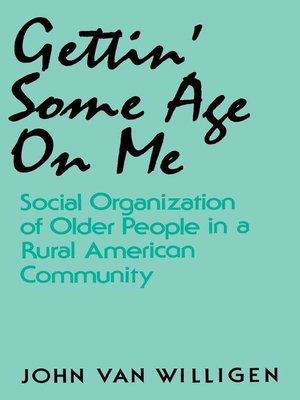Gettin' Some Age on Me
ebook ∣ Social Organization of Older People in a Rural American Community
By John van Willigen

Sign up to save your library
With an OverDrive account, you can save your favorite libraries for at-a-glance information about availability. Find out more about OverDrive accounts.
Find this title in Libby, the library reading app by OverDrive.



Search for a digital library with this title
Title found at these libraries:
| Library Name | Distance |
|---|---|
| Loading... |
The social life of older rural Americans is made up of relationships formed through kinship, their neighborhoods, and the organizations to which they belong. These social institutions are shaped by the ways people use them, and therefore change through time. In this precedent-setting study, John van Willigen uses the concept of social network to investigate life-course changes in the relationships of older people within the context of community history.
Gettin' Some Age on Me grew out of a study of more than 130 older people in a rural Kentucky county. They were interviewed concerning their relationships with others, and data were collected on the give and take of support that is part of their social life. An understanding of community life and history, developed through interviews and period documentation, provided a context for understanding the changes these people have experienced over time. Finally, related studies by other researchers provided a framework for interpreting rural and urban differences.
Van Willigen skillfully interweaves these various accounts to reveal fundamentally important patterns. It is clear that these other people should be viewed not as dependent and isolated but as important sources for social support; that even though their social relationships decline in number late in life, early in the post retirement period there is an apparent increase in social involvement; and that older people are much less isolated in the rural community studied than in many urban areas.
This book makes a substantial contribution to the very limited literature on aging in rural America. It is important reading for social gerontologists and for all social scientists with an interest in American communities.







